
wxmx
-
Posts
3,684 -
Joined
-
Last visited
Content Type
Profiles
Blogs
Forums
American Weather
Media Demo
Store
Gallery
Posts posted by wxmx
-
-
3 hours ago, aggiegeog said:
Next week looks very cold with multiple systems to watch.
Yes, the region has to watch the very cold air intrusion Tue/Wed which will feature a s/w crossing the area a day afterwards.
-
 1
1
-
-
Colder than forecasted, and definitely wetter. Drizzle lasted for over 50 hours...nothing was forecasted until the very last minute. A few hours of stratocumulus snow were included (first I ever witnessed, you can see the rather uncommon sounding we experienced, you can even see in one of the pics that the higher elevations missed the snow) for a trace to small accumulations in places, plus freezing drizzle and freezing fog, making it the second event this far down this winter.
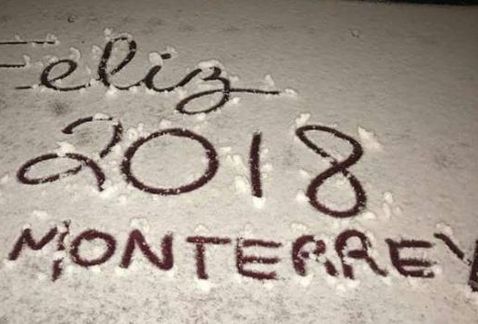
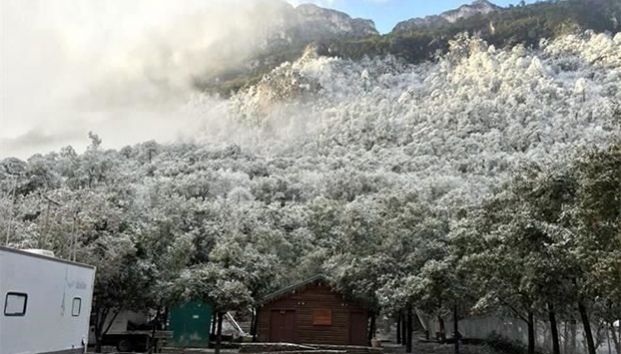
-
42 minutes ago, DoctorMu said:
wxmx may enjoy the latest GFS run. We've had one 5 inch miracle snow already in CLL this month!
Temps in early Jan get even crazier. Entertaining run!
And during my bday to boot ;)....Most probably it will be gone in one of the next few runs.
-
Wrong way BBB (Baja Bowling Ball) shown in the 12z GFS
 .
.
-
All is games and fun until you migrate a subtropical-like ridge into the Arctic circle and a massive 1063mb high barrels down the continent.
-
 1
1
-
-
1 hour ago, aggiegeog said:
There is great agreement between the GFS and Euro along with their ensembles on a -EPO/-PNA pattern locking in starting late next week. Still too far out for to be confident in timing of precip or temp profiles to determine precip types. Overrunning events with Arctic air entrenched at the surface will tend to be freezing rain events, but we will wait to see how things play out with each individual system.
Agree with your analysis. The difference between the models, so far up to 12z, is in the mean trough placement. The Euro is more progressive, with a less -PNA pattern that evolves into neutral/slightly positive. In consequence the mean trough is placed along the central CONUS, with a positive titled trough digging into NW MX. The reason, I think, is in how they handle the MJO. The Euro tugs it along into more favorable phases (8, 1), before plunging it into the circle of death. The GFS prefers phases 7 & 8 which would favor storminess along the Pacific coast, and undercutting, at least partially, the building trough further east. It's very hard to pinpoint the Pacific energy, which has been loaded with storms that dig south in this pattern...so even in a pattern where you have relatively shallow Arctic air entrenched, a Baja bowling ball would deepen the cold in the column and have more snow along it's track vs. freezing rain.
The -EPO pattern looks pretty interesting, and the next 2 weeks (at least) look to be loaded with arctic air for our neck of the woods (Plains). The 10 day 12z Euro is just historic Christmas snow about to happen for a lot of people.
-
 1
1
-
-
1 minute ago, aggiegeog said:
I have been expecting the phasing, hope it intensifies more still. Here in E TX we will need an intense upper low for us to have any shot at snow early next week.
Yeah, but not too much. A full phasing could suppress the storm south, and give Houston another taste of snow.
-
 2
2
-
-
1 minute ago, aggiegeog said:
I noticed that. The northern Mexican mountains are having a great December.
Yeah, and pretty early in the season. The Euro is bullish as well. It all comes down to how much phasing of the current Baja low goes on as the Polar Jet brings an s/w to meet it. The models are trending for much more interaction with the latest 12z runs, hence the sudden change of tune for this parts in relatively short notice.
-
-
We didn't get the snow jackpot, but the big prize was so close that I could smell it. From my bedroom window you could see the mountains to the NW and N that got the main snow band. The highway from Monterrey to Laredo was closed with vehicles stranded for over 15 hours. Reports indicate 10+ inches of snow there (40 kms north of Monterrey). Mountains to the NW showed incredible gradients, with some peaks completely snow capped, with at least 1.5 feet of snow, probably closer to 2 feet at least. While 3 kms to the east there was probably less than 6 inches. Mountains to my south are higher, but probably got less than 6-8 inches top.
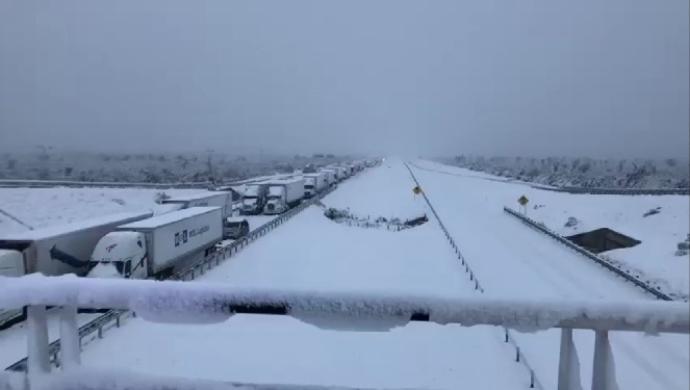
In another news, the pattern appears to reload, with models showing the classic Hawaiian trough/Alaskan ridge progressing east into a W Pac ridge, mid Conus trough. Even the 6z GFS today shows a clear and extreme McFarland signature, with a 588dm ridge into south Alaska :o. It's in the long range, so I won't take it very seriously until it shows in the <7 days progs.
-
 2
2
-
-
-
-
Increasingly likely that the low lands here we'll see accumulating snow. Modeling has trended colder, wetter and more energized with almost every single run since Dec 3rd. Now looking at mesoscale models and the Euro that are developing a heavy snow band about 50-80 kms north of Monterrey. Some models show more than 10"of snow in that band. The 12z GFS shows over an inch of precipitation IMBY while the whole column plummets below freezing. Not all would be snow, but at least half of it would (conservatively) if taken verbatim. It would be the largest snowfall here in 50 years.
-
 1
1
-
-
Models have trended for the polar jet s/w to phase with the stj s/w in NW MX, bringing colder air and more moisture. This has translated to enhanced probabilities of wintery precipitation IMBY...and my literal BY could see snowflakes, not just the mountains. This would beat the earliest snowfall from Dec 12, 1997 in modern times.
The synoptic setup is similar to Dec 1997 and Dec 2004, but with a less tilted trough and a bit less height crash, although the Pacific ridge is much stronger, allowing to tap a bit colder air from Canada. 850mb temps in 1997 and 2004 dipped around -5C, I expect similar this time, although the coldest models show something around -7/-8 C. The boundary layer will be relatively warm for the most part of the event, with temps hovering above freezing, although models have trended colder and are now showing freezing for a few hours Friday morning. That and bands of heavier snowfall could allow for some trace or little accumulation near the valley (500-600m ASL) with a nice tight gradient the further up you go, up to maybe a foot above 2000m.
Latest GFS (Tue 12z)
-
 1
1
-
-
Chances of wintry precipitation are increasing in the higher parts of MBY for Thu/Fri. Kind of early this far south.
-
Not just forward speed, but also size is a factor on whether OHC is important or not. Big cyclones will tend to churn water ahead of it, cooling SSTs.
Also, another example of an intense cyclone strengthening up to landfall in a very shallow shelf was Felix. Does it matter much that you upwell water from 15-20 mts below sea surface when the whole column is 30C?
-
 1
1
-
-
Agree...same goes for Homestead during Andrew. Wooden frame houses and mobile homes don't stand a chance against a cat 4/5...OTOH reinforced concrete buildings will remain with little to no structural damage. Yes, windows, doors, roof tiles and damage related to falling trees/flying debris may occur, but you won't see a clean slab in the aftermath of a cat 4/5.
-
 3
3
-
-
While recon is not finding winds that support a 110 kts cane, it's also showing a decrease in central pressure. This is probably related to an eyewall restructuring that is happening now. MW imagery now shows a fairly decent eyewall, especially in the north half and IR shows very cold cloud tops surrounding the eye. This is probably the best Maria has looked since leaving Puerto Rico behind. Another thing of note is that shear is shown as just below 20 kts again, as well.
-
Just now, Hazey said:
Aren't land obstacles and obstructions(natural and manmade) taken into account when wind velocity is measured during landfall? I mean if a hurricane has a sustained wind of say 160mph, it's out in the wide open ocean. No impediments to the strength of the winds. When a anemometer on land measures the wind has been disrupted by land(hills,mountains, trees) as well as man made infrastructure(buildings etc). Makes me think you'll never get a true representation of the max wind speeds, atleast on land anyway. Perhaps this is all factored in? Always been curious about this.
It is factored in, other than the immediate coast, maximum winds are never expected inland, unless it's at an unimpeded height, but those winds are not representative of the near surface winds.
-
11 minutes ago, klw said:
Looks like the eye is clearing out again:
http://www.ssd.noaa.gov/PS/TROP/floaters/15L/imagery/vis_lalo-animated.gif
Shear increased temporarily according to CIMSS to between 20-30 kts very early this morning, then went down to around 20kts, but it's on the rise again.
-
Maria up to 110 kts and 955mb
-
May look ugly, but recon is reporting 117FL/115SFMR...even with the bias on SFMR reported, that's at least a 105kts cane
-
Yesterday, the eyewall was in shambles after traversing Puerto Rico. That's the big difference today, it's a huge eye, but there's already an eyewall. Central pressure might be stable, but since we now have an eyewall, there's already a more significant gradient pressure in said eyewall and that's shown as the RMW now show cat 3 winds, whereas yesterday it didn't. Slow gradual strengthening for the next 48 hours is expected.
With such a big eye, not only strengthening will be gradual, when the time comes, weakening will be at a slow rate, as big eyes are known to be relatively stable even on adverse conditions.
-
It will get it's time to get it's act back together. Disruption was not minimal by any means. Slow and gradual strengthening the next 24 hours are expected, since atmospheric and oceanic conditions are very favorable. Afterwards, conditions are still favorable, just not as much as currently, but I expect continued intensification up to the next 72 hours. Borderline cat 3/4 is my guess for it's next peak, before slowly unraveling.
-
 4
4
-

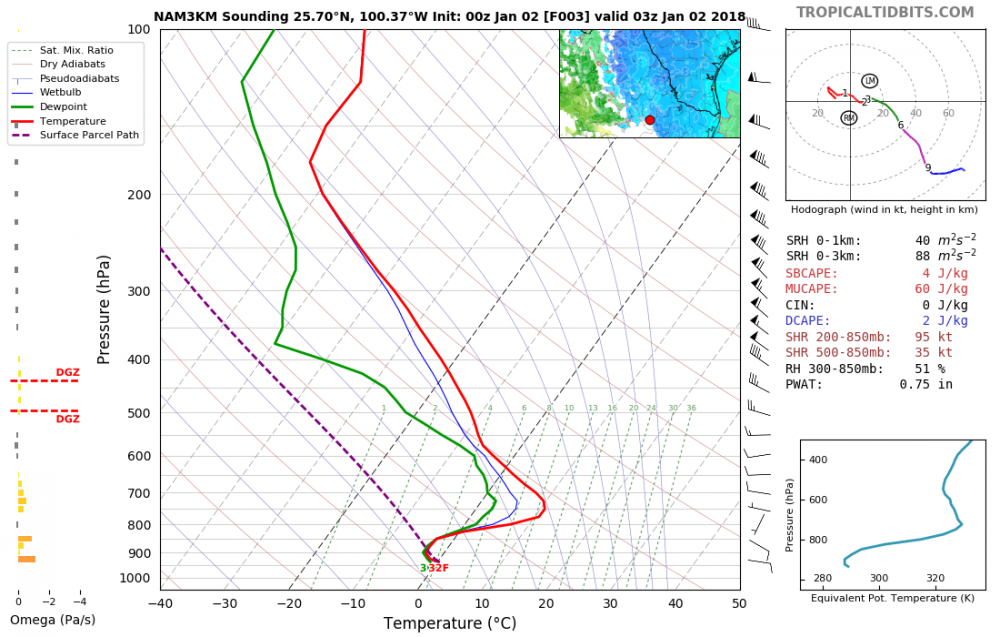
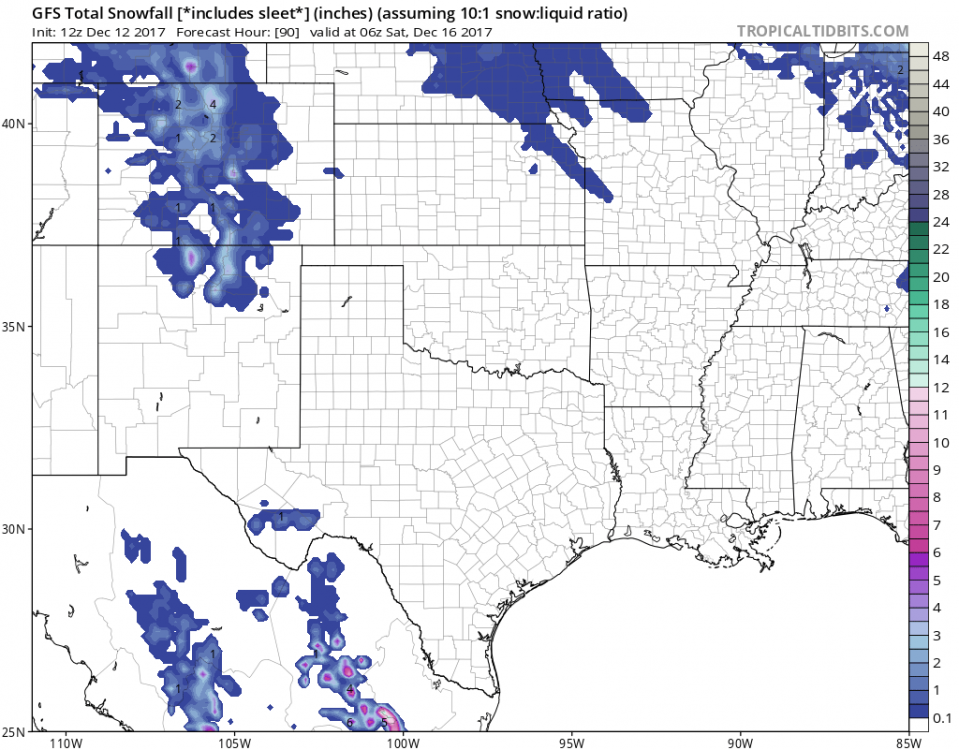

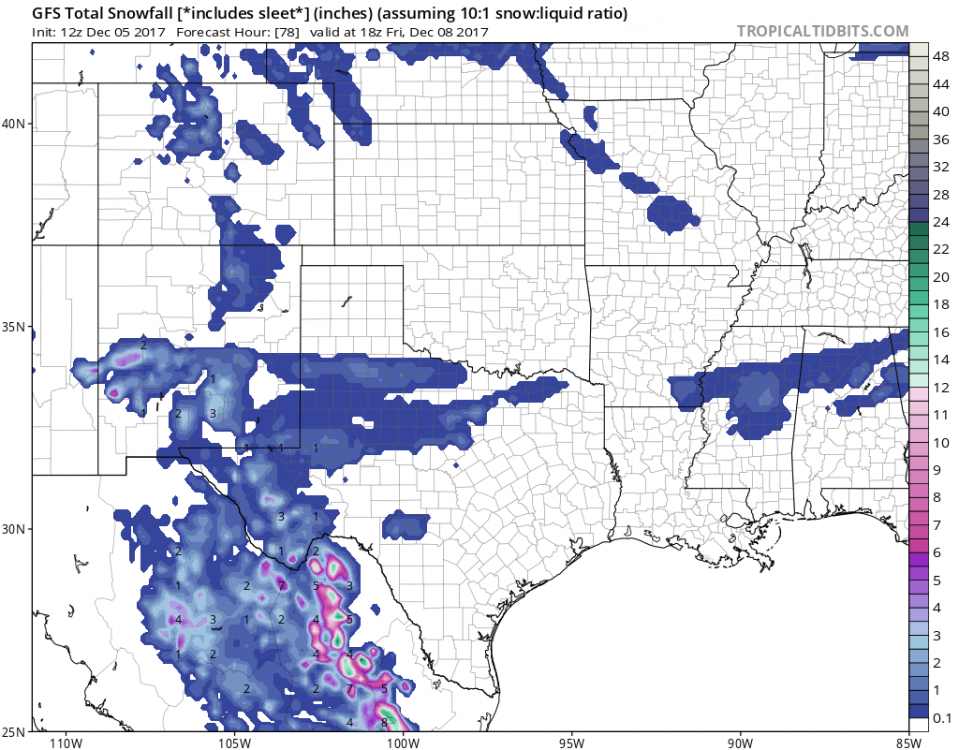
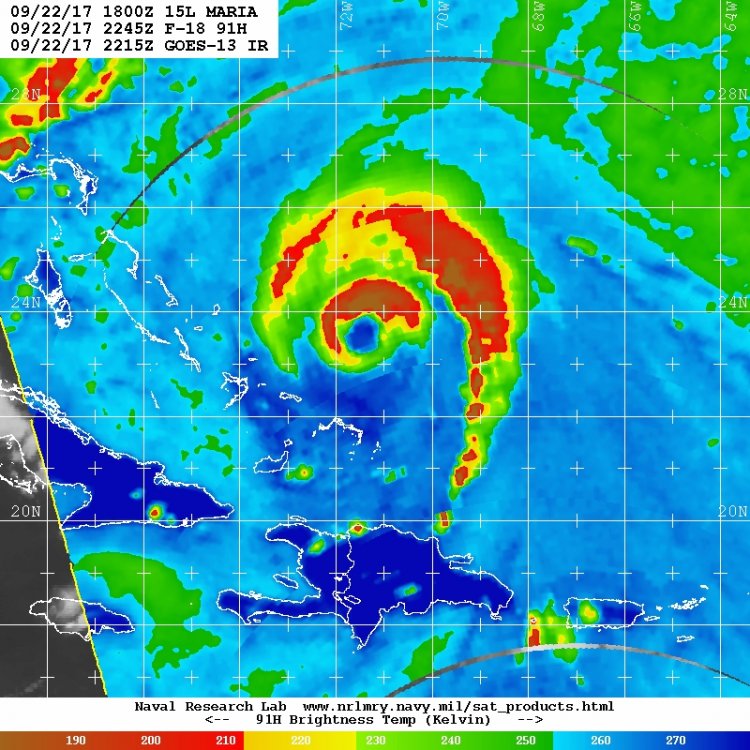
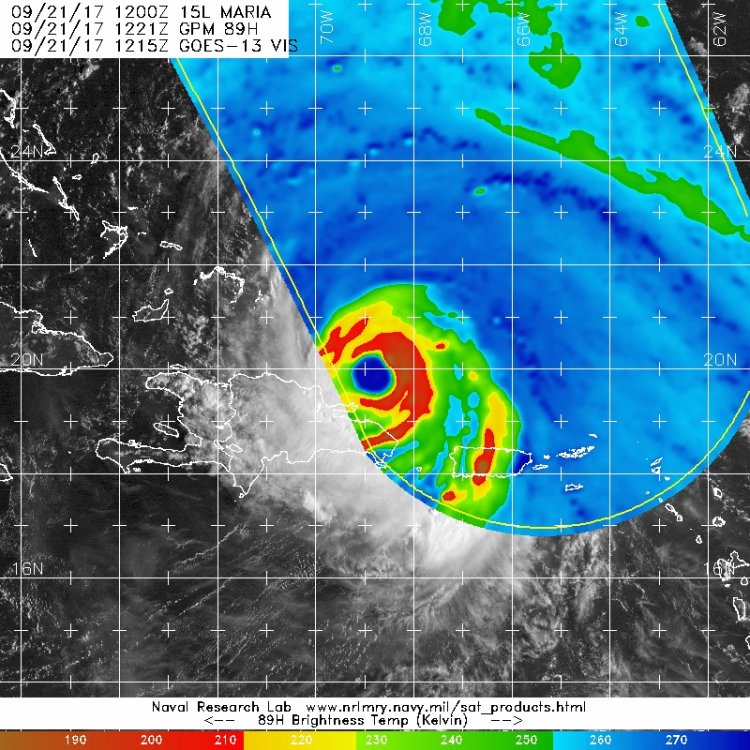
Texas/New Mexico/Louisiana/Mexico Obs And Discussion Thread Part 8
in Central/Western States
Posted
Models are latching on Canadian's idea of a weak s/w spinning off the W Coast trough into NW MX. That helps to moisten up the STJ and allows the cold to come a bit farther south
Euro: